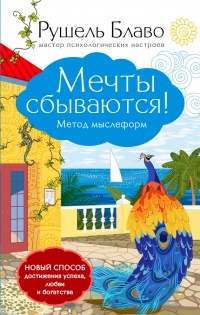Читать книгу "Садовник и плотник - Элисон Гопник"
Шрифт:
Интервал:
Закладка:
Kidd, Celeste, Steven T. Piantadosi, and Richard N. Aslin. “The Goldilocks Effect: Human Infants Allocate Attention to Visual Sequences That Are Neither Too Simple Nor Too Complex.” PLoS One 7, no. 5 (2012): e36399. doi: 10.1371/journal.pone.0036399.
Kidd, David Comer, and Emanuele Castano. “Reading Literary Fiction Improves Theory of Mind.” Science 342, no. 6156 (2013): 377–380. doi: 10.1126/science.1239918.
Kirp, David L. The Sandbox Investment: The Preschool Movement and Kids-First Politics. Cambridge, Mass.: Harvard University Press, 2009.
Kleiman, Devra G. “Monogamy in Mammals.” The Quarterly Review of Biology 52, no. 1 (1977): 39–69.
Koenig, Melissa A., Fabrice Clément, and Paul L. Harris. “Trust in Testimony: Children’s Use of True and False Statements.” Psychological Science 15, no. 10 (2004): 694–698. doi: 10.1111/j.0956–7976.2004.00742.x.
Koenig, Melissa A., and Paul L. Harris. “Preschoolers Mistrust Ignorant and Inaccurate Speakers.” Child Development 76, no. 6 (2005): 1261–1277. doi: 10.1111/j.1467–8624.2005.00849.x.
Kuzawa, Christopher W., Harry T. Chugani, Lawrence I. Grossman, Leonard Lipovich, Otto Muzik, Patrick R. Hof, Derek E. Wildman, Chet C. Sherwood, William R. Leonard, and Nicholas Lange. “Metabolic Costs and Evolutionary Implications of Human Brain Development.” Proceedings of the National Academy of Sciences 111, no. 36 (2014): 13010–13015. doi: 10.1073/pnas.1323099111.
Lagattuta, Kristin Hansen, Hannah J. Kramer, Katie Kennedy, Karen Hjortsvang, Deborah Goldfarb, and Sarah Tashjian. “Chapter Six – Beyond Sally’s Missing Marble: Further Development in Children’s Understanding of Mind and Emotion in Middle Childhood.” Advances in Child Development and Behavior 48 (2015): 185–217. doi: 0.1016/bs.acdb.2014.11.005.
Laland, Kevin N. “Social Learning Strategies.” Animal Learning and Behavior 32, no. 1 (2004): 4–14. doi: 10.3758/BF03196002.
Laland, Kevin N., Nicola Atton, and Michael M. Webster. “From Fish to Fashion: Experimental and Theoretical Insights into the Evolution of Culture.” Philosophical Transactions of the Royal Society B: Biological Sciences 366, no. 1567 (2011): 958–968. doi: 10.1098/rstb.2010.0328.
Lave, Jean, and Etienne Wenger. Situated Learning: Legitimate Peripheral Participation. Cambridge: Cambridge University Press, 1991.
Legare, Cristine H., E. Margaret Evans, Karl S. Rosengren, and Paul L. Harris. “The Coexistence of Natural and Supernatural Explanations Across Cultures and Development.” Child Development 83, no. 3 (2012): 779–793. doi: 10.1111/j.1467–8624.2012.01743.x.
Legare, Cristine H., and Susan A. Gelman. “South African Children’s Understanding of AIDS and Flu: Investigating Conceptual Understanding of Cause, Treatment and Prevention.” Journal of Cognition and Culture 9, no. 3 (2009): 333–346. doi: 10.1163/156770909X12518536414457.
Legare, Cristine H., Susan A. Gelman, and Henry M. Wellman. “Inconsistency with Prior Knowledge Triggers Children’s Causal Explanatory Reasoning.” Child Development 81, no. 3 (2010): 929–944. doi: 10.1111/j.1467–8624.2010. 01443.x.
Legare, Cristine H., and Tania Lombrozo. “Selective Effects of Explanation on Learning During Early Childhood.” Journal of Experimental Child Psychology 126 (2014): 198–212. doi: 10.1016/j.jecp.2014.03.001.
Legare, Cristine H., Nicole J. Wen, Patricia A. Herrmann, and Harvey White-house. “Imitative Flexibility and the Development of Cultural Learning.” Cognition 142 (2015): 351–361. doi: 10.1016/j.cognition.2015.05.020.
Levitin, Daniel J. This Is Your Brain on Music: Understanding a Human Obsession. New York: Atlantic Books, 2011.
Lewis, Michael. Altering Fate: Why the Past Does Not Predict the Future. New York: Guilford Press, 1997.
Lim, Miranda M., Zuoxin Wang, Daniel E. Olazábal, Xianghui Ren, Ernest F. Terwilliger, and Larry J. Young. “Enhanced Partner Preference in a Promiscuous Species by Manipulating the Expression of a Single Gene.” Nature 429, no. 6993 (2004): 754–757. doi: 10.1038/nature02539.
Lino, Mark. “Expenditures on Children by Families, 2013 Annual Report.” U. S. Department of Agriculture, Center for Nutrition Policy and Promotion. Miscellaneous Publication, no. 1528 (2013–2014).
Livingston, Gretchen. “Less Than Half of U. S. Kids Today Live in a ‘Traditional’ Family.” Pew Research Center, December 22, 2014. Accessed November 8, 2015. http://www.pewresearch.org/fact-tank/2014/12/22/less-than-half-of-u-s-kids-today-live-in-a-traditional-family/.
Lombrozo, Tania. “Explanation and Abductive Inference.” In Oxford Handbook of Thinking and Reasoning, edited by Keith J. Holyoak and Robert G. Morrison, 260–276. New York: Oxford University Press, 2012.
Lombrozo, Tania. “The Instrumental Value of Explanations.” Philosophy Compass 6, no. 8 (2011): 539–551. doi: 10.1111/j.1747–9991.2011.00413.x.
Lorenz, Konrad. “Die angeborenen Formen möglicher Erfahrung.” Zeitschrift fuer Tierpsychologie 5, no. 2 (1943): 235–409. doi: 10.1111/j.1439–0310.1943.tb00655.x.
Lucas, Christopher G., Sophie Bridgers, Thomas L. Griffiths, and Alison Gopnik. “When Children Are Better (or at Least More Open-Minded) Learners Than Adults: Developmental Differences in Learning the Forms of Causal Relationships.” Cognition 131, no. 2 (2014): 284–299. doi: 10.1016/j.cognition.2013.12.010.
Lutz, Donna J., and Frank C. Keil. “Early Understanding of the Division of Cognitive Labor.” Child Development 73, no. 4 (2002): 1073–1084. doi: 10.1111/1467–8624.00458.
MacArthur, Robert H., and Edward O. Wilson. The Theory of Island Biogeography. Vol. 1. Princeton: Princeton University Press, 1967.
Macdonald, David Whyte. Running with the Fox. London: Unwin Hyman, 1987.
MacLeod, Colin M. “Half a Century of Research on the Stroop Effect: An Integrative Review.” Psychological Bulletin 109, no. 2 (1991): 163–201. doi: 10.1037/0033–2909.109.2.163.
Mar, Raymond A., and Keith Oatley. “The Function of Fiction Is the Abstraction and Simulation of Social Experience.” Perspectives on Psychological Science 3, no. 3 (2008): 173–192. doi: 10.1111/j.1745–6924.2008.00073.x.
Mar, Raymond A., Keith Oatley, Jacob Hirsh, Jennifer de la Paz, and Jordan B. Peterson. “Bookworms Versus Nerds: Exposure to Fiction Versus Nonfiction, Divergent Associations with Social Ability, and the Simulation of Fictional Social Worlds.” Journal of Research in Personality 40, no. 5 (2006): 694–712. doi: 10.1016/j.jrp.2005.08.002.
Markham, Julie A., and William T. Greenough. “Experience-Driven Brain Plasticity: Beyond the Synapse.” Neuron Glia Biology 1, no. 4 (2004): 351–363. doi: 10.1017/s1740925x05000219.
Внимание!
Сайт сохраняет куки вашего браузера. Вы сможете в любой момент сделать закладку и продолжить прочтение книги «Садовник и плотник - Элисон Гопник», после закрытия браузера.




